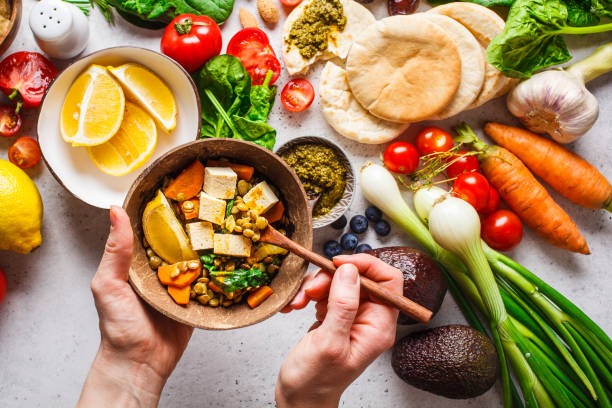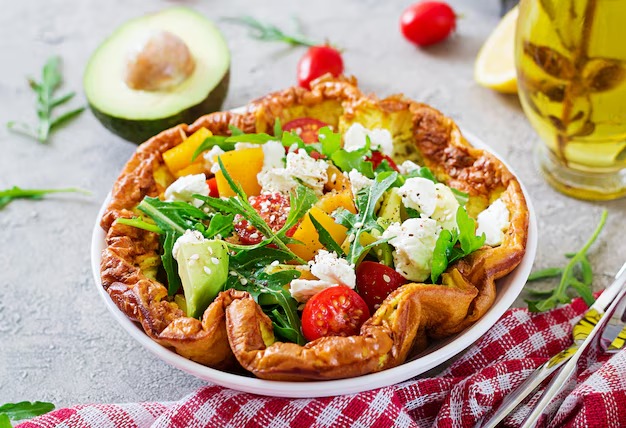Creative Trends in Food You Should Try
The culinary world is constantly evolving, driven by innovation, cultural fusion, and a growing emphasis on sustainability. As we navigate the ever-changing landscape of food, certain trends emerge that not only tantalize our taste buds but also reflect broader societal shifts. Here are some of the most exciting creative trends in food that you should consider trying, whether you’re a home cook or a seasoned food enthusiast.
Hyperlocal Ingredients
One of the most significant trends in recent years is the focus on hyperlocal ingredients. This movement emphasizes sourcing produce, proteins, and other ingredients from within a very small radius, often within the same city or even neighborhood. The idea is to reduce the carbon footprint associated with food transportation while supporting local farmers and producers.
For example, restaurants in urban areas are increasingly partnering with rooftop gardens or community farms to source their ingredients. At home, you can join a community-supported agriculture (CSA) program or visit farmers’ markets to incorporate hyperlocal produce into your meals. Dishes like heirloom tomato salads, locally foraged mushrooms, or honey from neighborhood beekeepers are perfect examples of this trend.
Plant-Based Innovation
Plant-based eating has moved beyond tofu and tempeh. Today, chefs and food scientists are creating plant-based alternatives that mimic the texture and flavor of meat, dairy, and seafood with remarkable accuracy. This trend is not just for vegans and vegetarians; it’s appealing to anyone looking to reduce their meat consumption for health or environmental reasons.
Try experimenting with plant-based meats like jackfruit pulled “pork” or pea protein-based burgers. Dairy alternatives, such as oat milk and cashew cheese, are also worth exploring. For a creative twist, consider making a plant-based sushi roll using marinated watermelon or smoked carrot as a substitute for fish.
Fermentation Revival
Fermentation is an ancient preservation technique that has made a comeback in modern kitchens. Beyond the familiar kimchi and sauerkraut, fermentation is being used to create unique flavors and textures in a variety of foods. This trend aligns with the growing interest in gut health, as fermented foods are rich in probiotics.
Experiment with making your own kombucha, miso, or fermented hot sauces. You can also try incorporating fermented ingredients into your cooking, such as using kefir in salad dressings or adding fermented garlic to marinades. The possibilities are endless, and the results are often surprisingly delicious.
Global Fusion Cuisine
As the world becomes more interconnected, culinary traditions from different cultures are blending in exciting ways. Global fusion cuisine combines elements from diverse culinary traditions to create entirely new dishes. This trend encourages creativity and exploration, allowing chefs and home cooks to push the boundaries of traditional recipes.
For instance, try making a taco filled with Korean bulgogi beef or a sushi burrito that combines Japanese and Mexican flavors. At home, you can experiment with spices and techniques from different cuisines to create unique dishes, such as Indian-inspired pizza or Thai-infused pasta.
Zero-Waste Cooking
With sustainability at the forefront of many people’s minds, zero-waste cooking has gained traction as a way to minimize food waste and make the most of every ingredient. This trend involves using every part of an ingredient, from root to stem, and finding creative uses for scraps that might otherwise be discarded.
For example, use vegetable peels to make a flavorful stock or turn stale bread into croutons or breadcrumbs. You can also experiment with recipes that use ingredients often thrown away, such as broccoli stems or citrus peels. Zero-waste cooking not only reduces waste but also encourages resourcefulness and creativity in the kitchen.
Interactive Dining Experiences
Dining is no longer just about the food—it’s about the experience. Interactive dining trends emphasize engagement and participation, turning meals into memorable events. This can range from DIY cooking stations to immersive themed dinners that transport diners to another time or place.
At home, you can recreate this trend by hosting a build-your-own taco night or a fondue party where guests can dip and cook their own ingredients. For a more elaborate experience, consider organizing a multi-course meal where each dish tells a story or represents a different culture.
Artistic Plating and Food Design
Presentation is a key element of modern cuisine, with chefs and home cooks alike treating their dishes as canvases for artistic expression. This trend focuses on the visual appeal of food, using color, texture, and arrangement to create stunning plates that are almost too beautiful to eat.
Experiment with layering ingredients, using edible flowers, or incorporating geometric patterns into your plating. Tools like squeeze bottles and tweezers can help you achieve precise designs. Remember, the goal is to create a feast for the eyes as well as the palate.
Conclusion
The creative trends in food highlighted above offer a glimpse into the future of dining and cooking. Whether you’re drawn to the sustainability of hyperlocal ingredients, the innovation of plant-based alternatives, or the artistry of modern plating, there’s something for everyone to explore. By embracing these trends, you can elevate your culinary skills, expand your palate, and contribute to a more sustainable and interconnected food culture. So, roll up your sleeves, grab your apron, and start experimenting—your next culinary adventure awaits!



